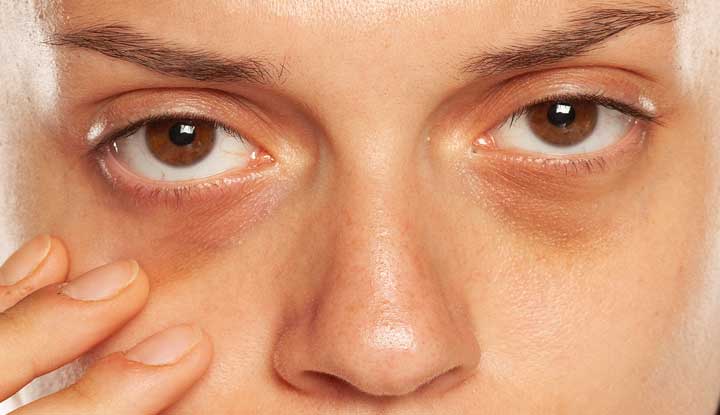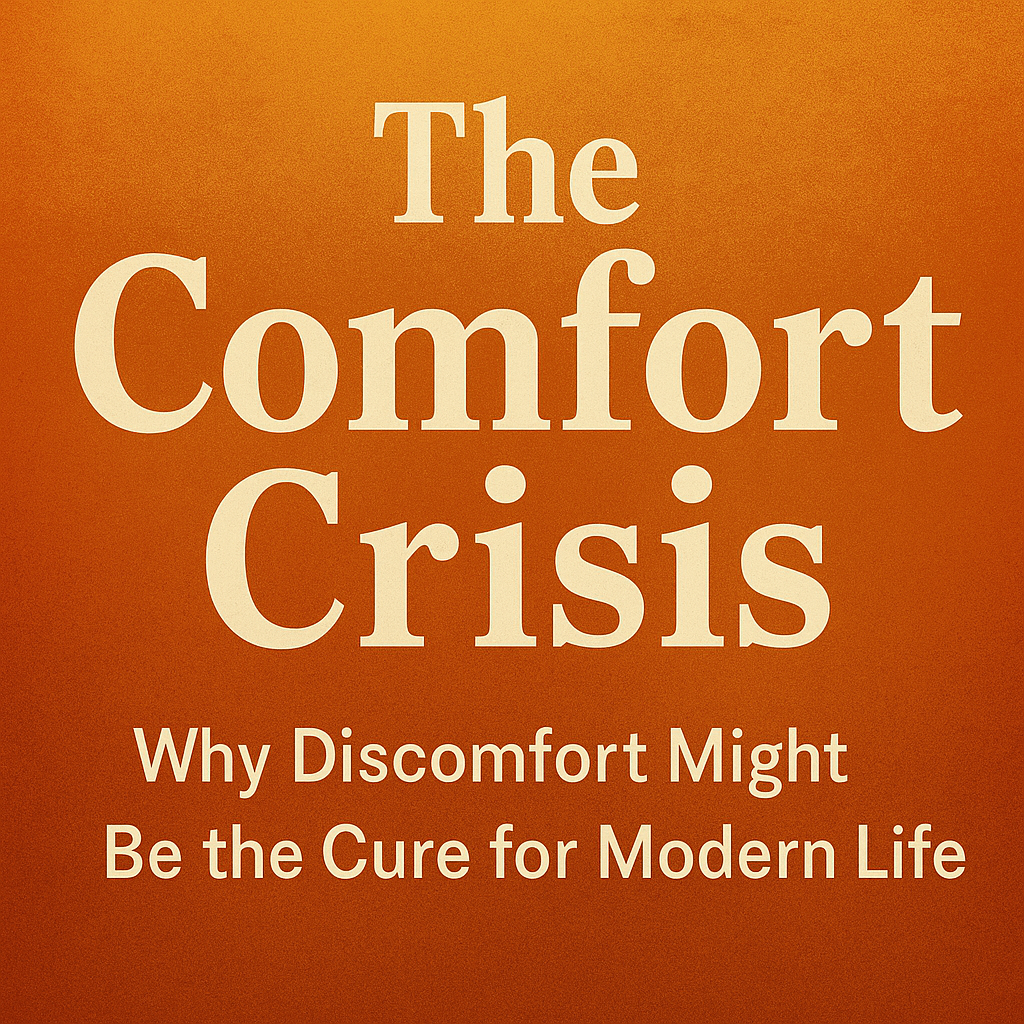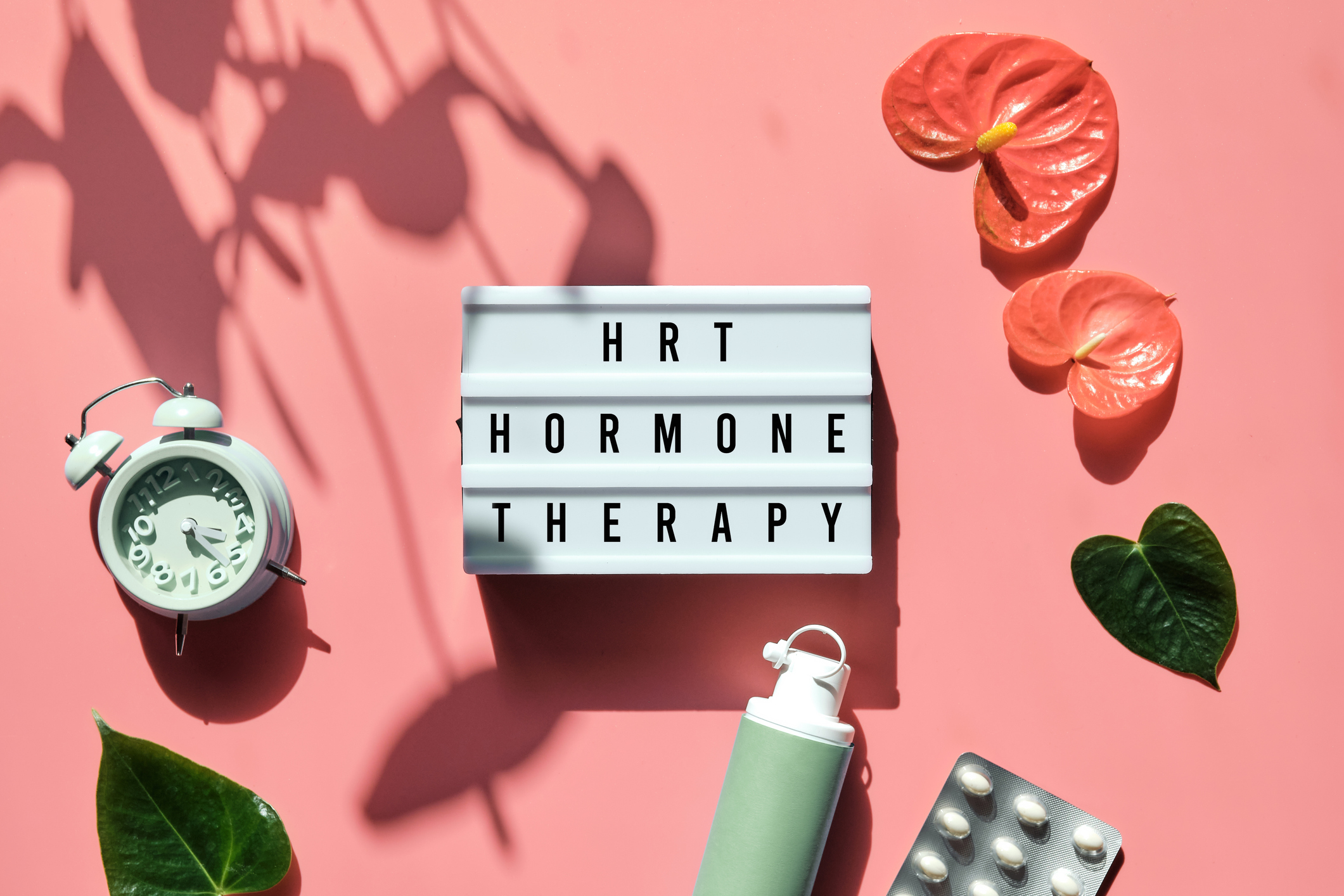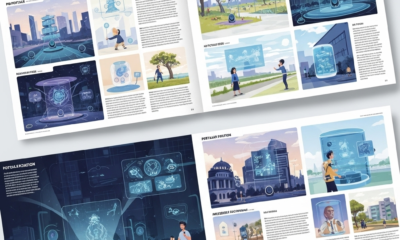HEALTH & FITNESS
How Does Vitamin C Help Under-Eye Dark Circles?

Have you ever looked in the mirror and noticed dark circles staring back at you? And no matter how much you conceal them, they still appear. You are not alone if all your makeup hacks have failed to hide your dark circles. It’s a frustrating experience that many of us face.
Dark circles under your eyes can make you feel self-conscious and worn out. Fortunately, with cosmetics advancements, we now have Vitamin C serums—which can be a game-changer. But how does Vitamin C help? Let’s discover all the ins and outs and pro tips for using vitamin C serum.
The Science Behind Vitamin C Serum
Vitamin C serums have been making waves in the skin-care industry for their effective reduction of dark circles. But what is the science behind it?
The following are some benefits of vitamin C, which helps brighten under-eyes and makes you look younger and fresher.
-
Skin Brightening Effect
Vitamin C, also known as ascorbic acid, is renowned for its brightening properties. Tyrosinase is an enzyme that helps produce melanin (a substance that gives colour to your skin). Vitamin C inhibits the enzyme function and reduces melanin synthesis. It helps lighten the skin under the eyes, making dark circles less noticeable.
-
Increases Collagen Synthesis
Collagen is a protein that provides structure and elasticity to your skin. As we age, collagen production decreases, leading to thinner skin and more visible blood vessels under the eyes. Vitamin C stimulates collagen synthesis, which can help thicken the under-eye skin, making dark circles less noticeable.
-
Hydrates Under Eye Skin
Some Vitamin C formulations contain hydrating ingredients that can help plump the skin. Proper hydration reduces the appearance of shadows and fine lines under the eyes, contributing to a more youthful and vibrant look.
-
Acts As Anti-Inflammatory
Inflammation can contribute to puffiness and dark circles under the eyes. Vitamin C eye serum for dark circles can help reduce swelling and puffiness and improve the overall appearance of the under-eye area. This makes your eyes look less tired and more refreshed.
-
Prevents Oxidative Stress
It is a potent antioxidant that protects the skin from oxidative stress caused by free radicals. Free radicals are unstable molecules and damage skin cells, leading to premature ageing and darkening of the skin. By neutralising these free radicals, Vitamin C helps prevent and repair damage to the thin skin under your eyes and improves the skin’s health.
Pro-Tips For Using Vitamin C Serum For Dark Circles
Having enough information on Vitamin C and its skin benefits, you know how to get rid of dark circles. But here are some tips to get the most out of Vitamin C and brighten your under eyes like never before. Follow these tips for effective results:
-
Choose the Right Product
Look for a Vitamin C serum or eye cream specifically formulated for the under-eye area. Get help from your skin-care professional to determine what concentration of Vitamin C would be best for you.
-
Patch Test
It’s excellent practice to patch-test a new product. Use the product on a small area of your skin to confirm that it does not react or irritate, then apply it thoroughly under your eye.
-
Apply Gently
The skin around your eyes is delicate. Use the tip of your finger to gently dab the product under your eyes, avoiding direct contact with your eyes.
-
Use in the Morning
Apply Vitamin C in the morning as part of your skin-care routine. After the Vitamin C serum, Use a broad-spectrum sunscreen to protect against UV rays that harm your skin cells.
-
Be Consistent
Results won’t happen overnight. Consistent use of Vitamin C over several weeks is necessary to see noticeable improvements in your under-eye dark circles.
Final Word
Vitamin C is an effective solution for brightening your skin and reducing the darkness under your eyes that gives you a tired look. Its brightening, collagen-boosting, antioxidant, and anti-inflammatory properties help brighten dark circles and improve overall skin health. By incorporating Vitamin C into your daily skin-care habits, you can achieve a brighter under-eye area and improved skin health and enjoy the confidence that comes with it.
HEALTH & FITNESS
The Comfort Crisis: Why Discomfort Might Be the Cure for Modern Life

🌟 Introduction
We live in the most comfortable time in human history. With smart homes, food delivery apps, ergonomic chairs, and endless digital entertainment, discomfort has become optional. But is this abundance of ease really helping us?
That’s the question Michael Easter explored in his bestselling book “The Comfort Crisis”. The concept challenges the modern norm of avoiding struggle and argues that voluntary discomfort can unlock greater mental strength, happiness, and health.
Let’s dive deep into what the comfort crisis is, why it matters in 2025, and how you can benefit from embracing a little hardship.
❓ What is the Comfort Crisis?
The Comfort Crisis refers to the modern phenomenon where people are so surrounded by comfort that it’s making them physically weaker, mentally duller, and emotionally less resilient.
According to Easter, humans evolved in challenging environments, where discomfort was constant — hunger, cold, physical labor. But in today’s world, we’ve engineered those challenges away, creating a life so convenient that it’s causing long-term damage.
“Comfort is killing us,” Easter writes. “To grow, we need to get uncomfortable.”
📚 Origins of the Concept
Michael Easter, a journalist and professor, coined the term in his 2021 book. He embedded himself in extreme experiences — including a 33-day Arctic hunting trip — to uncover how adversity sharpens the mind and strengthens the body.
He draws on:
-
Neuroscience 🧠
-
Anthropology 🌍
-
Psychology 📘
-
Personal challenges 🏔️
The result is a compelling argument that modern comfort might be the root of our anxiety, obesity, and loss of purpose.
🚨 The Downsides of Too Much Comfort
1. Mental Health Decline
-
Constant entertainment prevents stillness and reflection.
-
Avoidance of difficulty leads to anxiety and low self-esteem.
2. Physical Deterioration
-
Sedentary lifestyles weaken muscles and increase chronic illnesses.
-
Easy access to calories encourages overeating.
3. Loss of Resilience
-
Comfort makes us fragile.
-
Fewer real challenges = fewer coping mechanisms.
🧗 How Discomfort Builds Strength
✅ Discomfort Triggers Growth
-
Cold showers improve discipline.
-
Fasting enhances metabolic flexibility.
-
Physical exertion boosts mental clarity.
✅ Psychological Resilience
-
Facing fears reduces anxiety.
-
Embracing boredom increases focus.
✅ Emotional Fulfillment
-
Difficult accomplishments (like hiking a mountain or finishing a marathon) bring lasting joy — not momentary pleasure.
“Happiness comes from solving problems, not avoiding them.”
🔧 Ways to Embrace Productive Discomfort
-
Take Cold Showers 🧊
-
Exercise Beyond Your Limit 💪
-
Digital Detox for 24-48 Hours 📵
-
Do One Thing That Scares You Weekly 😨
-
Try Fasting or Skipping a Meal 🍽️
-
Sleep Without A/C or Heat Occasionally 🛌
-
Take the Stairs, Walk More 🚶♂️
Start small, and let it grow. Voluntary discomfort builds capacity — physically and mentally.
🌎 Why the Comfort Crisis Matters in 2025
As tech evolves, the temptation to never be uncomfortable grows stronger:
-
AI automates thinking
-
VR replaces outdoor activity
-
Delivery services erase effort
If we don’t act now, the next generation may lose vital survival skills, emotional strength, and human connection. The Comfort Crisis is not just about individual health — it’s a cultural and generational warning.
🧠 Final Thoughts
The Comfort Crisis is a wake-up call. Life begins at the edge of your comfort zone. If you want to grow — mentally, physically, emotionally — you need to seek challenge, not comfort.
In 2025, true freedom may lie not in more ease, but in voluntary struggle.
❓FAQ: The Comfort Crisis
Q1: Who wrote The Comfort Crisis?
Michael Easter, journalist and professor at UNLV.
Q2: Is the Comfort Crisis just about physical discomfort?
No, it includes mental, emotional, and spiritual discomfort too.
Q3: How can I safely embrace discomfort?
Start small — cold showers, exercise, digital detox — and expand gradually.
Q4: Is this concept backed by science?
Yes, Easter references neuroscience, anthropology, and psychology research.
Q5: Can discomfort really improve happiness?
Yes — long-term happiness is often the result of overcoming meaningful challenges.
👉 For more personal growth and wellness articles, visit SpaceCoastDaily.co.uk
HEALTH & FITNESS
Understanding HRT Therapy: Benefits, Risks, and What to Expect

Hormone Replacement Therapy (HRT) has become an increasingly popular option for individuals experiencing hormonal imbalances, particularly during menopause. By restoring hormone levels to their natural balance, HRT can alleviate many of the uncomfortable symptoms associated with aging and hormonal decline. If you’re considering this treatment, it’s crucial to understand how it works, who it benefits most, and what potential risks may be involved. Many women have found relief and renewed vitality through HRT therapy, especially when guided by professionals who specialize in personalized wellness plans.
What Is HRT Therapy?
Hormone Replacement Therapy involves supplementing the body with hormones that are no longer being produced in adequate amounts. Most commonly, HRT is used to treat symptoms of menopause in women, such as hot flashes, night sweats, mood swings, and vaginal dryness. The therapy can also help prevent osteoporosis, a condition that causes bones to become weak and brittle.
There are different types of HRT:
- Estrogen-only therapy – generally prescribed for women who have had a hysterectomy.
- Combination therapy – includes both estrogen and progesterone, typically for women who still have a uterus.
- Bioidentical hormone therapy – uses plant-derived hormones that are chemically identical to those the human body produces.
The choice of therapy often depends on individual health needs, medical history, and the severity of symptoms.
Who Can Benefit from HRT?
While HRT is primarily associated with menopausal women, it can be beneficial for a range of individuals experiencing hormonal deficiencies. Some of the most common candidates include:
- Perimenopausal and menopausal women: To reduce symptoms like mood swings, sleep disturbances, and hot flashes.
- Women with premature menopause or ovarian insufficiency: To prevent long-term health risks such as heart disease and bone loss.
- Men with low testosterone levels: Often called testosterone replacement therapy (TRT), this is a form of HRT used in men to treat fatigue, decreased libido, and muscle loss.
It’s important to consult with a qualified healthcare provider who can perform the necessary hormone level testing and customize a treatment plan that fits your specific needs.
Key Benefits of HRT Therapy
The advantages of undergoing HRT can be life-changing for many people. These benefits often include:
1. Symptom Relief
The most immediate benefit is a significant reduction in menopausal symptoms such as night sweats, hot flashes, and mood instability. This can improve overall quality of life and mental health.
2. Bone Health
Estrogen plays a critical role in maintaining bone density. HRT can reduce the risk of fractures and osteoporosis in postmenopausal women.
3. Heart Health
There is evidence suggesting that starting HRT around the onset of menopause may reduce the risk of heart disease. However, the relationship between HRT and cardiovascular health is complex and should be evaluated individually.
4. Cognitive Function
Some studies suggest HRT may help maintain cognitive functions and reduce the risk of neurodegenerative diseases such as Alzheimer’s when started early in menopause.
Are There Any Risks?
Like all medical treatments, HRT comes with potential risks, particularly when used long-term or without proper medical oversight. Possible risks include:
- Increased risk of blood clots and stroke
- Elevated risk of certain types of cancer (e.g., breast and endometrial cancer)
- Gallbladder disease
- Mood changes or depression
However, these risks can often be mitigated with personalized treatment plans, careful monitoring, and using the lowest effective dose for the shortest time necessary.
Getting Started with HRT
Before beginning HRT, it’s essential to undergo comprehensive hormone testing and discuss your medical history with a knowledgeable practitioner. You’ll want to choose a clinic that focuses on personalized care, ongoing monitoring, and holistic wellness. Clinics like Results Medical Aesthetics specialize in crafting individualized treatment protocols that prioritize safety, effectiveness, and overall well-being.
Treatment may involve regular consultations, follow-up lab work, and adjustments to dosage or hormone type depending on how your body responds. In many cases, patients begin to feel the positive effects of HRT within a few weeks.
Final Thoughts
Hormone Replacement Therapy can be a transformative option for those dealing with the symptoms of hormonal imbalance. While it’s not a one-size-fits-all solution, modern advances in testing and bioidentical hormones have made it safer and more customizable than ever. Whether you’re navigating menopause or another hormonal challenge, HRT may offer the relief and rejuvenation you need to reclaim your quality of life.
Always consult with a trusted medical provider to determine whether HRT is right for you and to ensure your treatment plan is safe and tailored to your unique needs.
HEALTH & FITNESS
Best Home Remedies for Headache – Natural Relief Without Medicine

Headaches can ruin your day, but before reaching for painkillers, try these proven home remedies for quick and natural relief. From herbal teas to acupressure, these methods are safe, effective, and easy to use at home and Best Pain Relief Patches.
Why Try Home Remedies for Headaches?
✔ No side effects (Unlike painkillers)
✔ Cost-effective (Uses everyday ingredients)
✔ Fast relief (Works in 15-30 minutes)
Let’s explore the best natural headache remedies backed by science and tradition.
1. Peppermint Oil (Instant Cooling Relief)
✅ How it works: Menthol in peppermint oil relaxes muscles and improves blood flow.
How to Use:
-
Dilute 2-3 drops with coconut oil.
-
Massage temples, forehead, and neck.
-
Inhale deeply for added effect.
📌 Best for: Tension headaches & migraines.
2. Ginger Tea (Anti-Inflammatory Powerhouse)
✅ How it works: Ginger blocks prostaglandins, reducing pain and nausea.
How to Use:
-
Boil 1-inch fresh ginger in water for 10 mins.
-
Add honey & lemon for taste.
-
Drink 2-3 times daily for chronic headaches.
📌 Best for: Migraines & stress-related headaches.
3. Cold Compress (Quick Numbing Effect)
✅ How it works: Constricts blood vessels, reducing throbbing pain.
How to Use:
-
Wrap ice cubes in a cloth.
-
Press on forehead or back of neck for 15 mins.
📌 Best for: Sinus & cluster headaches.
4. Hydration (Dehydration Headache Fix)
✅ How it works: Lack of water shrinks brain tissue, causing pain.
How to Use:
-
Drink 1-2 glasses of water at headache onset.
-
Add a pinch of salt for electrolyte balance.
📌 Best for: Hangovers & heat-induced headaches.
5. Lavender Oil (Calms Nerves & Pain)
✅ How it works: Reduces anxiety and relaxes tense muscles.
How to Use:
-
Inhale 2-3 drops in steaming water.
-
Apply behind ears (diluted with carrier oil).
📌 Best for: Stress & tension headaches.
6. Caffeine (In Small Doses)
✅ How it works: Boosts painkiller effects and improves blood flow.
How to Use:
-
Drink 1 small cup of coffee or green tea.
-
Avoid excess (Can trigger rebound headaches).
📌 Best for: Migraines with fatigue.
7. Acupressure (LI4 Point for Pain Relief)
✅ How it works: Stimulates endorphins, the body’s natural painkillers.
How to Use:
-
Press the webbed area between thumb and index finger.
-
Apply firm pressure for 30 seconds.
📌 Best for: Tension & migraine headaches.
8. Apple Cider Vinegar (Balances pH Levels)
✅ How it works: Alkalizes the body, reducing headache triggers.
How to Use:
-
Mix 1 tbsp in warm water + honey.
-
Drink once daily for prevention.
📌 Best for: Sinus & digestion-related headaches.
9. Magnesium-Rich Foods (Prevents Chronic Headaches)
✅ How it works: Low magnesium = more headaches.
Best Sources:
-
Spinach, almonds, bananas, dark chocolate.
-
Supplements (400mg/day) after doctor’s advice.
📌 Best for: Frequent migraine sufferers.
10. Sleep & Dark Room Therapy (Resets Brain)
✅ How it works: Lack of sleep triggers headaches; darkness reduces sensory overload.
How to Use:
-
Rest in a dark, quiet room for 20-30 mins.
-
Use a sleep mask if needed.
📌 Best for: Migraines with light sensitivity.
Bonus: Prevent Headaches Naturally
-
Avoid processed foods (Nitrates trigger migraines).
-
Practice deep breathing (5 mins daily).
-
Maintain good posture (Neck strain causes tension headaches).
When to See a Doctor?
🚨 If headaches are:
-
Sudden & severe (Like a “thunderclap”).
-
With fever, vomiting, or vision changes.
-
Worsening over time.
Final Tip: Track Your Triggers!
Keep a headache diary (Note food, stress, sleep patterns) to identify causes.
-

 Tech1 week ago
Tech1 week agoWhat is Janitor AI? Features, Use Cases & How to Use It Safely in 2025
-

 news1 week ago
news1 week agoBinomo Scam Exposed: Real Truth Behind the Trading App You Must Know in 2025
-

 news1 week ago
news1 week agoChatGPT vs Google Gemini: Which AI Wins in 2025?
-
Business4 weeks ago
Why Bulk Custom Playing Cards Are the Secret Weapon for Brand Visibility and Creative Projects
-

 Gaming2 weeks ago
Gaming2 weeks agoBest Gaming Accessories Under $50 in 2025 – Ultimate Budget Gaming Upgrades
-

 Tech2 weeks ago
Tech2 weeks agoPortalar (PortalAR) Guide 2025: How AR Portals Transform Environments
-

 news2 weeks ago
news2 weeks agoJames Webb Telescope News: Exploring the Frontiers of the Universe
-
Tech4 weeks ago
Revolutionizing Marketing with AI: How Visionation Helps Brands Dominate Google Rankings







